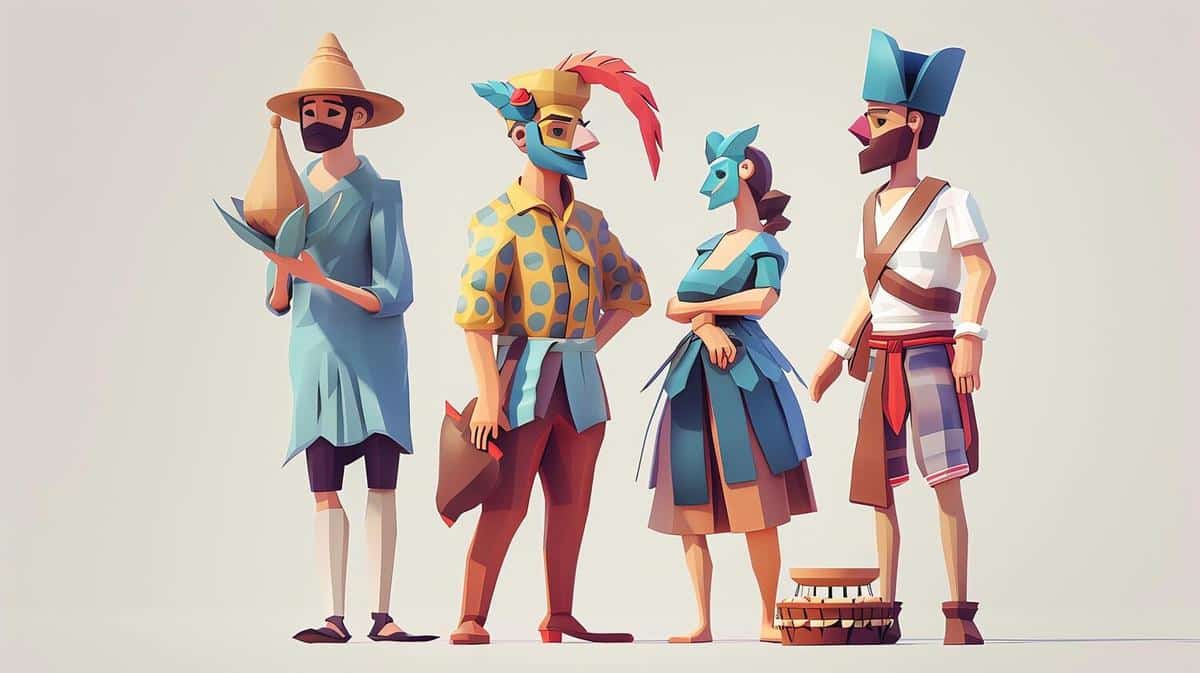
Fashion as a Reflection of Societal Change: A Historical Perspective
Fashion has always been more than just about clothes; it’s a mirror reflecting societal shifts and cultural transformations. As we delve into the history of fashion, we uncover a tapestry woven with threads of political, social, and economic change.
From ancient civilizations to the modern era, fashion provides a unique lens through which to view the evolution of society. Clothing styles have often mirrored the prevailing values and norms of their time, serving as a silent commentary on the world stage. Consider the opulence of the Renaissance, characterized by elaborate garments that symbolized power and wealth. This era marked a shift from the utilitarian clothing of the Middle Ages to attire that expressed individualism and social status.
The 20th Century: A Revolution in Fashion
The 20th century brought unprecedented changes, not just in fashion but in how society functioned. According to fashion historian Valerie Steele, “Fashion is a reflection of societal changes, and each era’s style can tell us a great deal about the world at that time.” The flapper dresses of the 1920s, for example, were emblematic of women’s emancipation and the jazz age’s carefree spirit.
The 1960s saw fashion become a medium for social commentary. The counterculture movement introduced bold patterns and vibrant colors, challenging traditional norms and promoting freedom of expression. A study by the Fashion Institute of Technology highlights how these trends were not just aesthetic but also political, with clothing becoming a form of protest against the status quo.
Fashion as a Cultural Identifier
Fashion has also served as a cultural identifier, reflecting the traditions and values of different societies. Traditional attire, such as the Japanese kimono or the Indian sari, not only signifies cultural heritage but also communicates social status and role within the community. These garments have transcended time, continuing to influence contemporary fashion designers worldwide.
Personal Anecdote
I vividly recall attending a cultural festival where diverse traditional costumes were showcased. It was a powerful reminder of how fashion can bridge cultural gaps, allowing us to appreciate the uniqueness of various traditions.
Fashion and Technology: The New Frontier
In recent years, technology has significantly influenced fashion, ushering in an era of smart textiles and sustainable practices. The integration of technology in fashion not only reflects advancements in scientific research but also addresses the growing demand for eco-friendly options. For instance, 3D printing is revolutionizing the way garments are designed and produced, reducing waste and promoting sustainability.
| Era | Fashion Trend | Societal Change |
|---|---|---|
| 1920s | Flapper Dresses | Women’s Emancipation |
| 1960s | Hippie Fashion | Counterculture Movement |
| 1980s | Power Suits | Women in Workforce |
| 1990s | Grunge | Rebellion Against Materialism |
| 2000s | Fast Fashion | Globalization |
| 2010s | Eco-Friendly Fashion | Environmental Awareness |
| 2020s | Tech-Infused Apparel | Technological Advancements |
| Future | Virtual Fashion | Digital Revolution |
Actionable Advice
To truly understand the fashion landscape, immerse yourself in cultural experiences. Attend fashion shows, visit museums, and engage with diverse communities to appreciate the rich tapestry of global fashion.
Frequently Asked Questions
How does fashion reflect societal change?
Fashion reflects societal change by mirroring cultural, political, and economic shifts. It serves as a visual representation of the values and norms of an era.
What is the impact of technology on fashion?
Technology has greatly impacted fashion by introducing innovations such as smart textiles and sustainable practices, revolutionizing the way garments are designed and produced.
In conclusion, fashion as a reflection of societal change offers a compelling narrative of human history. By understanding the cultural influences in fashion, we gain insights into the ever-evolving tapestry of society. Whether through traditional attire or modern innovations, fashion continues to be a significant cultural marker, shaping and reflecting the world around us.


